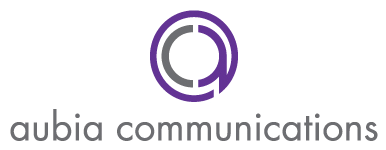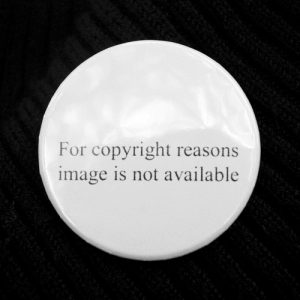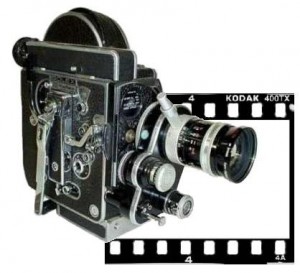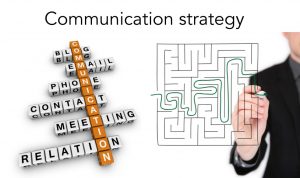 In November, the Aubia Communications Blog will explore communications law. In conjunction with my Communications Law for Public Relations and Advertising class this semester at Syracuse University, I start with this post on copyright, followed by trademark, and finishing with defamation. Quoted references can be found in the book “The Law of Journalism and Mass Communication” Third Edition, 2012, by Robert Trager, Joseph Russomanno and Susan Dente Ross.
In November, the Aubia Communications Blog will explore communications law. In conjunction with my Communications Law for Public Relations and Advertising class this semester at Syracuse University, I start with this post on copyright, followed by trademark, and finishing with defamation. Quoted references can be found in the book “The Law of Journalism and Mass Communication” Third Edition, 2012, by Robert Trager, Joseph Russomanno and Susan Dente Ross.
Solopreneur Sophia just launched her e-commerce website, Sophia’s Soaps, selling her homemade spa products. She’s happy with the format of the website, and the photos she used of her own bath salts, scrubs and soaps plus some she found online couldn’t have been better for her “relaxation and pampering” theme. A few weeks later, as sales are rolling in and she’s busy putting together product packets, she receives a disturbing cease-and-desist letter informing her one of the images on her website belongs to Getty Images. She has violated the company’s copyright protection of a photo featuring a bubble bath. The letter goes on to demand the immediate removal of the photo from her website and the possibility of court-enabled fines. Unsure of what to do now, Sophia immediately removes the image. After a few weeks go by, and she hears nothing more, she believes the matter is settled. Then one day, she receives a call from a legal representative for Getty Images demanding payment for the use of the photo. As her legal troubles surmount, Sophia faces loss of revenue and the threat of losing her business.
No matter the size of the company, regardless if there is a legal department or not, business owners need to have an understanding of law to protect their assets and to refrain from inadvertently violating any regulations. To begin with, knowing how copyright law affects you and your business can save you from Sophia’s predicament and protect the product you’ve worked so hard to develop.
What is copyright?
“A copyright is an exclusive legal right protecting intellectual creation from unauthorized use” (p. 580). Copyright law can be found in the U.S. Constitution, and it was developed to encourage the creation of individual works.
What does copyright protect?
The Copyright Act of 1976 protects “‘original works of authorship’ that are ‘fixed in any tangible medium of expression'” (p.584). As originality is not defined by the law, there is some interpretation to what is protected. If your work is the first of its kind, never displayed in this particular way and comes from your creative design, then it would be safe to assume you have an original on your hands.
The 1976 law identifies eight categories of works eligible for copyright protection:
1. Literary
2. Musical
3. Dramatic
4. Pantomimes and Choreographic
5. Pictorial, graphic and sculpture
6. Motion pictures and other audiovisual
7. Sound recordings
8. Architectural
With these eight categories of works, there are six exclusive rights the creators of these works are guaranteed under copyright law:
1. The right to reproduce the work
2. The right to make derivative works
3. The right to distribute the work publicly
4. The right to publicly perform a work
5. The right to publicly display a work
6. The right to transmit a sound recording through digital audio means
How long does copyright last?
“Today, copyright for many works lasts for the creator’s life plus 70 more years” (p. 581). The Copyright Act of 1976 gave the creator’s life plus 50 years, and the Sonny Bono Copyright Term Extension Act of 1998 granted another 20 years. In the cases of works for hire, or where an employer hires an employee to create a work specifically for the company and the copyright remains with the employer, protection lasts 95 years from publication or 120 years from creation, whichever is shortest.
As copyright is a property right, it can be transferred to another person through a will. The right may also be licensed or leased out for a certain purpose and time period. If a copyright does expire, though, the work enters into the public domain where it can be used without permission as it is no longer protected.
How do I register for copyright?
As soon as an author fixes an original work in a tangible medium the work becomes automatically copyright protected. If the work is not registered, however, one cannot seek damages if it is used without authorization. To register a work for copyright protection, the creator must submit two copies of the published work or one copy of the unpublished work to the U.S. Copyright Office with the correct forms and fees. After the Office receives the packet, a Certificate of Registration is sent to the creator. This can take anywhere between four to six months.
 How do I bring suit for copyright infringement?
How do I bring suit for copyright infringement?
After you have registered your work, you now have a legal means to protect your intellectual property. If you believe your original work has been used without authorization, there are three items you must prove to bring a law suit against the offender:
1. Provide valid copyright protection showing your original work was created by you and fixed in a tangible medium.
2. Provide the Certificate of Registration proving the copyright is registered with the U.S. Copyright Office.
3. Prove that either the offender directly copied the protected work or had access to the protected work and the work in question is substantially similar.
“A copyright infringement suit is a tort action – the copyright holder seeks compensation for the harm the infringer caused” (p. 602). Along with damages, a copyright plaintiff can also have the violator remove the protected image from any and all materials.
What if I’m accused of copyright infringement?
With what you’ve learned in this blog post up to this point, hopefully you can avoid Sophia’s predicament. Regardless if you meant to directly copy another’s work (shame on you) or inadvertently used a protected work, you can still face legal action. If you do find yourself in hot water, there is a defense to copyright infringement.
If the court rules you used the protected work in a fair use method, you will not be held liable for a violation. Courts use a four-part test to determine if a protected work has been used illegally, but be aware that each case is judged individually on its own merits. First, the court will look at the purpose and character of the use. If the work was used for criticism, parody, comment, news reporting, teaching, scholarship or research, then you may be within a legal right to use the work. Next, the court will determine the nature of the work. Typically, a court is apt to extend copyright protection to more creative works than factual works. Third, the court will examine the amount and substance of the portion used. You are more likely to be convicted of copyright infringement the larger the amount used of the protected work and the more significant the part used was to the protected work. Finally, the court will determine the effect on the plaintiff’s potential profits. Many courts view this part of the test the most important. If the copyright violation adversely impacted the creator’s ability to sell his product, the court is most likely to bring a judgment in favor of the plaintiff.
How do I avoid committing copyright infringement?
The best possible method to avoid using another’s work without permission is to do your homework. Research if something you want to use is owned by somebody or in the public domain. The U.S. Copyright Office can assist with providing information on copyrighted material. If it is copyrighted, ask the owner permission before using it. Read the agreements in place for Creative Commons works.
Understanding and being diligent about copyright law protects your hard-earned profits and keeps you out of trouble. What questions do you have about copyright law?
photo credit: Horia Varlan via photopin cc




